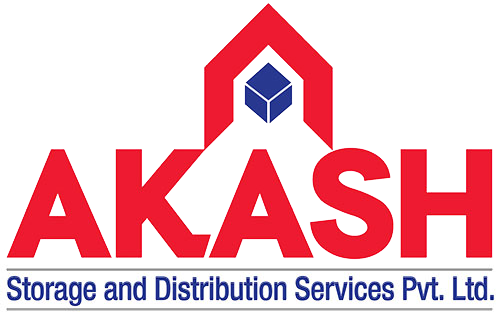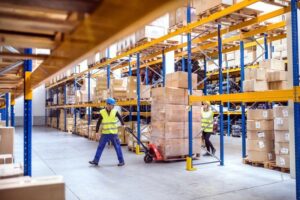In today’s fast-paced and ever-evolving supply chain landscape, warehousing efficiency is no longer just an option—it’s a competitive necessity. Efficient warehouse operations can directly impact your business’s bottom line, reduce operational costs, and enhance customer satisfaction. By leveraging warehousing expertise, you can unlock significant performance improvements and drive growth. Here’s how maximizing efficiency with warehousing expertise can transform your operations. Discover the role of advanced inventory control systems like RFID and barcode scanning in improving stock accuracy.
-
Optimized Warehouse Layout
An expertly designed warehouse layout is key to minimizing wasted space and streamlining operations. Warehousing professionals understand the importance of optimizing the flow of goods—from receiving to storage, picking, packing, and shipping. By strategically organizing storage areas, using vertical space, and separating fast-moving items from slow-moving stock, you can reduce travel time and increase productivity. Save costs by optimizing your warehouse’s space with high-density storage systems and smart configurations. Learn how optimizing warehouse layout and space utilization can streamline your operations and improve performance.

-
Inventory Accuracy and Control
Effective warehousing isn’t just about storing goods; it’s about knowing exactly where they are and how much you have. Experts in warehouse management utilize advanced systems, such as barcode scanning, RFID tagging, and inventory management software, to maintain accurate stock levels and reduce discrepancies. Better inventory control leads to fewer stockouts, overstock issues, and increased order accuracy—all of which translate into higher customer satisfaction. Efficient order picking strategies reduce lead times, increase speed, and minimize fulfillment errors.
-
Implementing Lean Warehousing Practices
Warehousing expertise brings a focus on lean principles, which aim to eliminate waste and improve process efficiency. This can include reducing unnecessary movement, optimizing material handling, and streamlining workflows to ensure that every action adds value. Lean warehousing not only minimizes costs but also enhances speed and quality in fulfilling customer orders. Discover the role of advanced inventory control systems like RFID and barcode scanning in improving stock accuracy.
-
Technology Integration
Warehousing experts understand the critical role that technology plays in modernizing operations. From warehouse management systems (WMS) to automated picking technologies, the right tech solutions can transform your warehouse into a more efficient, scalable operation. With tools such as real-time inventory tracking, automated data capture, and robotic automation, businesses can reduce manual labor and increase throughput. Integrate cutting-edge technology into your warehouse operations to boost scalability and throughput. Boost productivity with technology integration, from WMS to automated picking systems, for faster, more accurate operations.
-
Skilled Workforce Training
A highly skilled workforce is essential for running a successful warehouse. Warehousing experts emphasize the importance of on-going employee training and development. Well-trained employees are more productive, make fewer mistakes, and contribute to a safer working environment. Investing in employee education ensures that staff members are knowledgeable about the latest industry best practices, equipment handling techniques, and safety protocols.
- Efficient Picking and Packing Processes
Order picking is one of the most time-consuming activities in warehouse operations. Warehousing expertise includes designing picking strategies that minimize time and effort, such as zone picking, batch picking, or wave picking. By implementing these strategies, companies can reduce picking errors, shorten lead times, and improve overall order fulfillment speed. Additionally, proper packing techniques can help reduce shipping costs and prevent damage during transit.
![]()
- Space Utilization and Storage Optimization
Maximizing space is a top priority for efficient warehousing. Experts can assess and improve your storage capacity through the use of innovative solutions like high-density storage systems, pallet racking, and mezzanine floors. By using space wisely and optimizing storage configurations, businesses can reduce the need for additional warehouses or expansions, saving costs while increasing capacity.
-
Data-Driven Decision Making
Modern warehousing expertise emphasizes the use of data analytics to optimize operations. Warehousing professionals rely on data to track key performance indicators (KPIs) such as order accuracy, fulfilment speed, and labor productivity. With access to real-time data and historical insights, businesses can make informed decisions that continuously improve efficiency, reduce costs, and address bottlenecks. Real-time data and KPIs drive decision-making, helping you address bottlenecks and improve warehouse performance.
-
Sustainability in Warehousing
Sustainability is becoming a priority for businesses, and warehousing is no exception. Experts in warehousing can guide businesses in implementing eco-friendly practices, such as reducing energy consumption, optimizing packaging materials, and using energy-efficient lighting. A focus on sustainability not only reduces operational costs but also enhances your brand’s reputation and helps meet regulatory requirements. Skilled employee training ensures a productive, safety-conscious workforce that drives warehouse efficiency. This piece effectively highlights the importance of warehousing efficiency in modern supply chains.
-
Strategic Warehouse Location
The physical location of your warehouse has a significant impact on shipping times and costs. Warehousing experts can help determine the best location for your facilities based on proximity to suppliers, customers, and transportation hubs. This strategic planning ensures quicker deliveries and lower shipping expenses, improving customer satisfaction while lowering logistics costs. Save costs by optimizing your warehouse’s space with high-density storage systems and smart configurations. It provides a comprehensive overview of strategies and benefits, from optimized layouts to technology integration, employee training, and sustainability.
Conclusion
Maximizing warehouse efficiency with the help of warehousing expertise offers businesses a competitive edge in today’s market. From optimizing layout and space utilization to implementing advanced technology and data-driven strategies, warehousing professionals provide the knowledge and tools to streamline operations, improve accuracy, and reduce costs. By investing in warehousing expertise, companies can not only meet the demands of today but also position themselves for future growth and success. Implement lean warehousing practices to eliminate waste and improve process efficiency in your operations. Real-time data and KPIs drive decision-making, helping you address bottlenecks and improve warehouse performance. Eco-friendly warehousing practices, from energy-efficient lighting to optimized packaging, benefit both the environment and your bottom line.



















